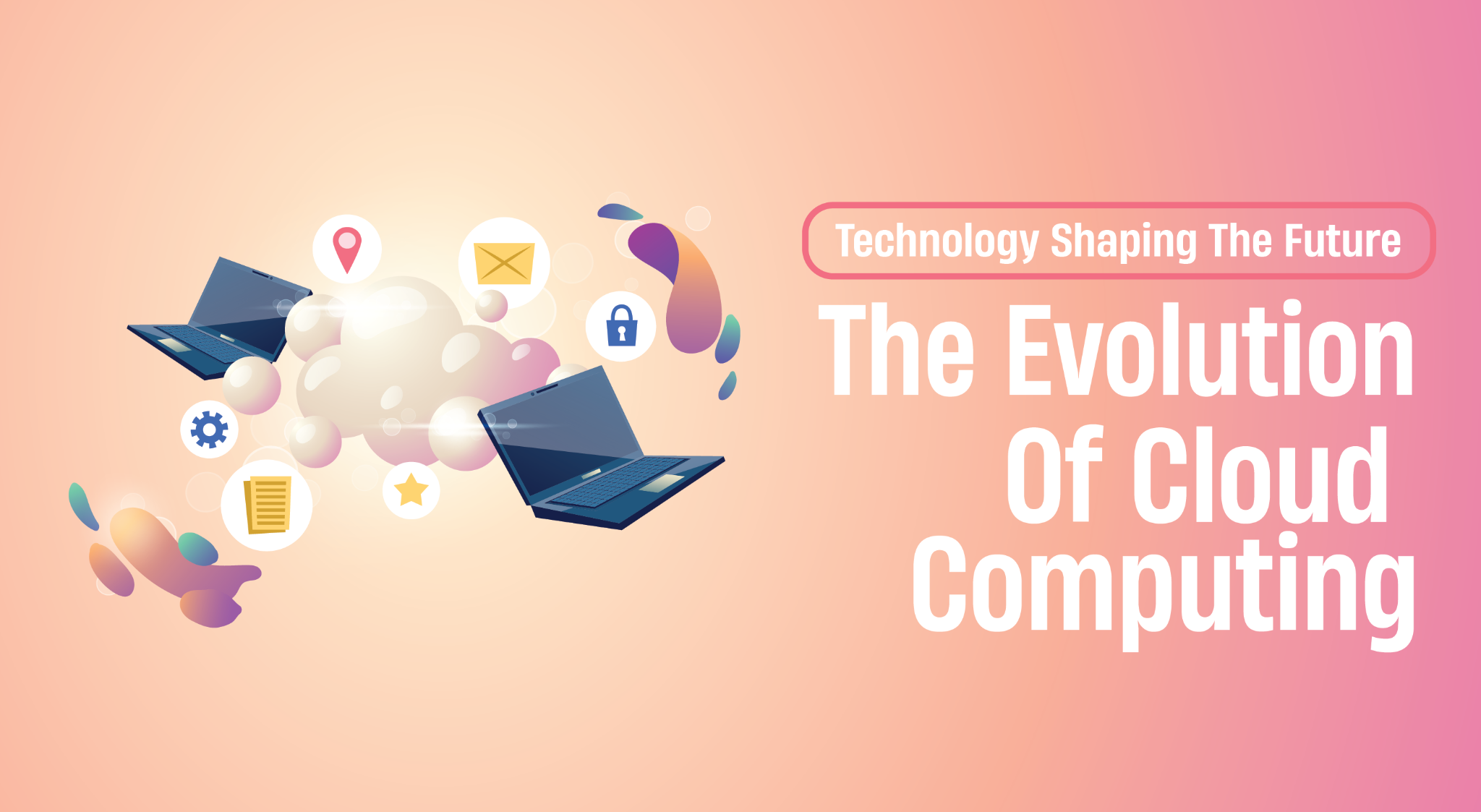The most emerging technology these days, called Cloud Computing, is offering a list of innovative features to all large organizations. Due to this, large enterprises are immensely gaining high productivity from cloud technology in their workflows and regular operations.
The concept first emerged in the 1950s and is now driving the IT industry seamlessly after achieving its full potential. But there's still a lot to learn, and the development of cloud computing technology will crucial in assisting us in comprehending how to enhance and magnify its advantages.
The development and implementation of LLMs, for example, can be supported by cloud computing thanks to the advent of AI. This helps the company automate chores associated with creative and code authoring. Besides, many more trends are deemed to revolutionize the future of cloud technology.
Latest Trends in the Cloud Technology
Cloud computing technology has successfully laid a strong foundation for future IT trends and emerging technological developments. It has also helped in creating a powerful platform for businesses to manage workflows, networks, and data storage. Artificial Intelligence integration, serverless architecture, and multi-cloud strategies are some of the technological trends in cloud computing.
1. Enhanced Cloud Operations with Artificial Intelligence
Since cloud services now include artificial intelligence, businesses may leverage advanced machine learning models and analytics with more powerful processing capabilities, which is completely changing the game. Combining AI with cloud services enables companies to provide personalized customer experiences, automate workflows, and extract insights from enormous amounts of data.
Giants in the IT industry, such as IBM and Amazon, have created AI-driven cloud platforms, such as IBM Watson and Amazon SageMaker, that provide businesses with the resources they need to create, train, and use machine learning models.
- Automation: The integration of AI into cloud computing is able to systematically automate and streamline workflows with predictive maintenance. By assisting companies in making data-driven decisions, it boosts production and efficiency.
- Personalization: Cloud providers may also gain a deeper understanding of customer behavior and preferences by utilizing the powerful pattern matching and sharp observational skills of AI. This increases customer retention and revenue by enabling firms to offer more accurate recommendations and customized services.
- Cost-effective: Unnecessary or unused cloud space immensely affects the enterprise cost model. AI simplifies the removal of redundant data, spots possible cloud waste, and streamlines real-time resource distribution. Following cloud cost management best practices helps businesses optimize spending and eliminate waste effectively.
- Data Security: Along with technological advancements, security threats are also rapidly rising. AI in cloud computing, with the use of pattern analysis and historical data, can significantly improve cybersecurity principles. It is able to identify possible cyber threats and fraud before they are carried out. AI might significantly aid cybersecurity teams in developing preventative security measures.
- Data Management: AI in cloud computing analyzes data sets and patterns to provide optimized data storage techniques. To optimize storage and facilitate speedy extraction, it can recognize data that is repeated and rarely used. AI boosts productivity, lowers expenses for infrequently accessed data, and facilitates quicker data-driven decision-making for businesses.
The best part is that whether we are talking about AI-based chatbots or recommendation systems, these are all hosted on cloud platforms. This is because the cloud platform provides scalable resources that can meet varying business needs.
2. Increased Flexibility with Hybrid and Multi-Cloud Services
A hybrid cloud model is an advanced blend of two or more separate cloud environments, often a merge of at least one private cloud service and one public cloud service. It provides the option to use private or public clouds according to the requirements.
In the event that more public cloud services are required, this facilitates the management of traffic surges. The flexibility and security of hybrid cloud computing are enhanced. However, a hybrid cloud setup is expensive and difficult to configure.
A multi-cloud strategy helps organizations access cloud computing tools from two or more public cloud services. It is a blend of two or more private clouds, two or more public clouds, or a mix of both. Businesses can choose cloud service vendors that best satisfy their operational demands.
A multi-cloud setup helps to choose the appropriate services for every unique task. It is less expensive than a private cloud and provides a scalable environment. It also lets you select the best connectivity provider and offers more backup capacity.
3. Higher Scalability with Serverless Computing
Serverless computing is a technique that allows users to access backend services without bothering about the infrastructure. It helps to write and deploy code quickly and charges users based on their computation. Businesses using serverless computing will not have to pay for a fixed or reserved bandwidth and servers.
In the past, businesses that wished to develop web-based apps had to purchase actual hardware in order to run a server. Later, cloud computing technologies made it possible for businesses to remotely rent server space. Cloud providers established auto-scaling strategies to address the issue of wasted server space throughout the process.
Serverless computing is cost-effective as the user does not have to pay for unused space. Developers can design functions with a specific purpose and simplify code scalability possibilities with FaaS. Serverless models remove time-consuming bug fixes and code deployment.
4. Edge Computing
In cloud computing, data is processed in centralized datacenters. These data centers might be located far from where the data is generated. There are two major issues with this setup: first of all, high bandwidth usage if a large amount of data needs to be transmitted over the Internet to cloud servers, and second of all, there is a significant latency (delay in processing) due to massive distance between the data source and data center.
With the world focusing on Industry 4.0, we need quick processing and instant insights so decisions can be made in real-time. Hence, cloud computing has evolved to the concept of edge computing where data can be processed nearby to the data source, increasing the efficiency and reducing latency.
Edge computing relies on distributed resources, such as colo data centers, which allow businesses to host their infrastructure close to their users.
Edge computing means the AI computation is done near the edge of the network and close to the data source. Edge devices are physical hardware devices, like IoT gateways, industrial controllers, POS terminals, and robots, which are equipped with enough memory, processing power, and computing resources to collect, process, and execute the data analysis process in real time. They are situated in remote locations at the edge of the network.
5. AI-as-a-Service
You must have heard about software-as-a-service, which allows you to use a software application through the Internet using your browser. Now, you can AI services can also delivered through the Internet, all thanks to the advancement of cloud computing technology.
With AIaaS, businesses can access AI tools and capabilities on demand, making it easier for developers to integrate AI functionalities like ML, natural language processing, image analysis, and data analytics into their applications. All this, without requiring them to invest in building or setting up AI infrastructure themselves.
6. Sustainable Cloud Computing
With the world gearing towards reducing its carbon footprint by 2030 and data centers being among the equipment that consumes the most energy, it is time to switch to sustainable cloud computing services. This can be considered the future of cloud computing because the trend to adopt sustainable and green computing practices will rise in the coming time.
Green cloud computing technology includes adopting environmentally friendly practices throughout the lifecycle of computers, chips, and other components, from design and manufacturing to usage and disposal.
It also includes powering data centers through renewable energy sources, like solar or wind power. The traditional data center also uses significant power to cool the equipment. Green computing practices would include employing advanced cooling techniques, like hot/cold aisle environment, free cooling, or liquid cooling.
It will also include sustainable building design, like using sustainable building materials, optimizing the layout to capture natural light, and integrating green roofs.
Conclusion
Data management, storage, and archiving have all undergone radical change because of cloud computing. Over time, it has evolved to offer unparalleled convenience and efficiency. Technology related to cloud computing will advance and become more efficient. The most recent developments in cloud computing guarantee that the technology will keep offering organizations cutting-edge solutions. It will improve security, scalability, and efficiency.
Do you want to use the latest developments in cloud computing technologies to improve your operations? Then, you need professional advice from cloud computing specialists who have years of practical experience and industry knowledge. Hyqoo can help you hire freelance cloud engineers or remote cloud experts within 2-3 days. Connect with our experts today.



